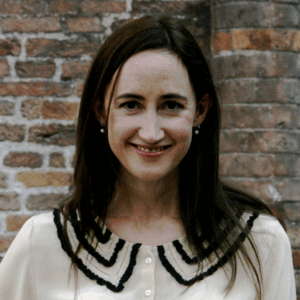
10 Books by Polish Women Writers We'd Like to See Translated
Joanna Bator, Weronika Murek, Olga Tokarczuk, and Many More
Polish books in translation? It takes some effort to find them in bookshops and even more effort to read about them in the review sections of newspapers and magazines, or to find them in public libraries. And when it comes to books written by Polish women? Well, need I say more? We’ve heard it all before . . .
And yet there is a plethora of good books written by women that get published in Poland each and every year, from high-brow “literary” fiction (Olga Tokarczuk, Magdalena Tulli and Wioletta Grzegorzewska, to name a few), to poetry (Urszula Kozioł, Krystyna Miłobędzka, Ewa Lipska and Julia Hartwig), and through to genre fiction (crime writing from Katarzyna Bonda, Joanna Jodełka and Kaja Malanowska). Women are also doing well when it comes to a great Polish speciality, literary reportage (Małgorzata Szejnert, Hanna Krall). I could continue. As everywhere else, women often bring a different perspective to their writing, a fresh approach that can enrich readers’ experience.
Truth be told, Polish women writers don’t have it easy—not only abroad but also at home. Disputes rage on and on over the fact that it’s more difficult for women to get published, to get nominated for awards and to win them. Could a push to publish more writing by Polish women abroad, especially in Anglophone markets, also improve their situation back home and give them greater recognition, which, quite honestly, a lot of them deserve? We may never know. But one thing is certain—the books in the following list should be picked up by English-language publishers, and pronto!
So here is our collaborative selection of Polish books, written by women, that we believe deserve to be translated into English. Next year, when the London Book Fair showcases Polish Writing, let’s not forget that Polish women writers form its beating heart.

Julia Fiedorczuk, Nieważkość (Weightlessness)
Wydawnictwo Marginesy, 2015
The protagonists of Nieważkość are three women linked by traumatic events that took place when they were young. Zuzanna works for a Warsaw advertising agency, her boss sends her to Athens where she is to meet young artists and recruit them for a new project. Helena is a mother of two and works as a cleaner at a conference centre called Atena. Ewa is a homeless mystic. The three women are linked by their past. All grew up in a small town near Warsaw, were somewhat close but then fell apart.
Why translate it?
Weightlessness is one of the best women’s novels in recent years: it’s universal, it opens itself up to many different interpretations, it’s complex and rich in meaning. Like in Fiedorczuk’s earlier collections of stories, women are the main characters in this novel
–Paulina Małochleb
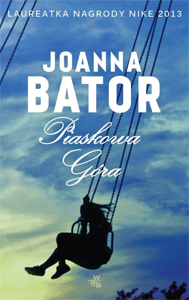
Joanna Bator, Piaskowa Góra (Sandy Hill)
Wydawnictwo W.A.B., 2009
In the early 1970s a miner called Stefan Chmura and his wife Jadzia come to live in the biggest block of flats at a prefabricated housing estate in Wałbrzych. The novel is a detailed account of the lives and fortunes of Stefan, Jadzia, their daughter Dominika and their mothers Halina and Zofia. Bator’s novel is a panorama of the social history of communist Poland. It is also a family saga, focusing on the individual, small-scale dramas of ordinary people. Another focus of the novel is women, their desires, longings and fears.
Why translate it?
The novel is written in an ironic tone, with striking language—a mixture of naïve, coarse speech and the style of the smooth, controlled narrative. Thus the remarks the characters utter are blended with the voice of the hyper-conscious, sneering narrator. This creates a sort of detachment, as if the writer is trying to establish her position half way between empathy and derision.
–Dariusz Nowacki

Weronika Murek, Uprawa roślin południowych metodą Miczurina (Growing Southern Plants the Michurin Way)
Wydawnictwo Czarne, 2015
Weronika Murek creates the world based on unbridled imagination and unrestrained literary freedom. She writes about hellish characters, captured on the thin line between dream and awakening, between life and death: Virgin Mary is knitting socks for Jesus in front of a flickering TV; passed away girl is getting ready for her own funeral. Murek mixes various literary styles and deceives readers’ senses. Short, dense, almost aphoristic sentences, not a word is excessive. Those are stories about every day life but presented in the aura of unusual.
Why translate it?
Weronika Murek takes her readers to a world they find familiar. We recognize the habits of its inhabitants, the interiors and spaces they people—have we been there…? We try to figure out where we are, what era this is. Something tells us, though we are never quite certain, that it might be countryside in communist times. Or a small town? Or perhaps the capital? (…) I can imagine Murek winding this huge machinery, the stage starts rotating, Murek is in control of all its elements. Every bit—every bolt, engine, lever—is well oiled. Each works with precision, fast and briskly. Sparks fly. The world comes to life.
–Dominika Bierczyńska 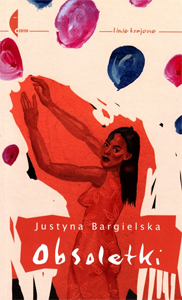
Justyna Bargielska, Obsoletki (Born Sleeping)
Wydawnictwo Czarne, 2010
Mistress of the short form, renowned for jump cuts in subject, playful syntax, shifts of register from colloquial to philosophical, in the award-winning Obsoletki (Born Sleeping) Justyna Bargielska examines the landscape of quotidian existence, our disappointments and humiliations. With an unflinching eye she focuses on mortality in the midst of everyday life, including that of women confronted by the still birth of a child. These are short pieces forming an entire narrative shot through with flashes of lyricism, humor, despair and even exaltation.
Why translate it?
Bargielska confronts taboos—breaking the silence about stillbirth and miscarriage. Without sentimentality, by means of intriguing language, she cuts through stereotypes and complicates notions of motherhood. Obsoletki consist of 41 short stories, which appear on the surface to be separate mini-entities. However on reading them together we are convinced of a single story, one which we can’t even find the words to name . . . Terrible, sad, and at the same time ordinary and light. Written in vividly raw language, spoken in the here and now and for all that more authentic. All this—a controversial subject, lively language and the play of contrasts make the reading of these superb miniatures unusually memorable.
–Literary Salon (Contributed by Maria Jastrzębska) 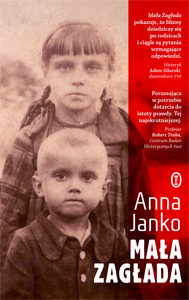
Anna Janko, Mała zagłada (A Minor Annihilation)
Wydawnictwo Literackie, 2015
A Minor Annihilation is a non-fiction book, but it does not read like one: although Janko has researched her topic thoroughly, the intimate context and her personal, literary style turn the book into something like a diary of historical trauma. Janko’s mother—the poet Teresa Ferenc—was nine when her village, Sochy, was burned down by the Germans, its population decimated. In 37 short chapters Janko reconstructs the tragedy and, along with her mother, tries to work through it. This is a book about children in war and how we inherit trauma—factual and unflinching, but touching and tender.
Why translate it?
As with Svetlana Alexievich’s reportage, in this book war is shown not only as a tragic episode in history, but as a living memory, which even after many years puts us on our guard as a danger that could recur.
–Aleksandra Żelazińska (Contributed by Marta Dziurosz)

Maria Janion, Kobiety i duch inności (Women and the Spirit of Otherness)
Wydawnictwo Sic!, 2006
Janion, now 90, is a true doyenne of Polish letters. An academic, feminist and literary critic, she’s the author of some 20 books analyzing and deconstructing Polish literary history and wider cultural phenomena, for example the vampire myth. This book, on real and fictional women combined into Janion’s own “herstory,” seems particularly apt for this list—some of the names she mentions might be unfamiliar to those not au fait with Polish literature, but that makes the feeling of spiritual recognition all the more thrilling.
Why translate it?
The heroine—a woman, an advocate of the philosophy of difference, occupying the periphery of culture, suppressed or even voiceless, here gains the right to speak and expresses her identity, demolishes the previous system of cultural truths and axioms. According to the reviewers of this book, it is the woman who deserves to be considered the emblem of postmodernity.
–Ewa Nawrocka (Contributed by Marta Dziurosz)
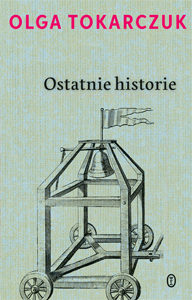
Olga Tokarczuk, Ostatnie Historie (Final Stories)
Wydawnictwo Literackie, 2004
This novel by Poland’s leading female writer consists of three related stories, where each of the three heroines is from a different generation of the same family. In the first, a middle-aged woman called Ida crashes her car in the remote countryside in the dead of winter, and ends up the guest of an old couple at a farm for dying animals, which Ida is mysteriously unable to leave. In the second, Ida’s mother reminisces about the compromises she has been forced to make in life, as she waits for help after the death of her husband at their isolated village home, also in deep snow. In the third, Ida’s daughter has run away from her failed marriage to an exotic Malaysian island with her eight-year-old son, but despite the contrast in setting, the theme is as before—she meets an enigmatic man who has come to the island to die, and who confronts her with the truth about herself.
Why translate it?
Final Stories presents some poignant, universal truths through powerful storytelling and an unusual structure. Although the content, setting and style of each of the three stories is very different, they overlap and combine to form a whole by examining some common themes and relationships from various angles. These are: death and how people relate to it as it comes closer to them; a lack of emotional fulfillment; broken relationships with men—in each story the men are noticeably absent, having left or died; and finally failure to communicate within the family—the only emotions linking these women are a sense of duty and guilt. It is a sad but beautiful and moving book, which must have taken courage to write. It stays with the reader forever.
–Antonia Lloyd-Jones

Hanna Krall, Wyjątkowo długa linia (An Extremely Long Line)
Wydawnictwo a5, 2004
Hanna Krall writes true stories in the style of fiction, but is undoubtedly the queen of the reportage genre. This carefully researched book reads like a novel, but is the true tale of the inhabitants of a 400-year-old tenement house in the oldest part of Lublin. These are Jewish families, and from the start they are aware of their fate; their individual stories are a backdrop to the impending Holocaust. Starting with the history of the building itself, Krall focuses on two residents in particular, both famous Jewish intellectuals—the elderly writer, poet and dramatist Franciszka Arnsztajn, and the young poet Józef Czechowicz, who read his poetry to her. Until she chose to move to the Warsaw ghetto, “to be with all the rest,” and he went for a shave and was killed by a bomb that fell on the barber’s shop. But their spirits, and the building, live on.
Why translate it?
The “extremely long line” of the title is the continued existence of the residents of this house, as well as the house itself. Krall not only documents the rich lives and tragic fates of her subjects, but also their legacy, in the form of surviving descendants and eternal poetry. By telling her story in a form that reads like a neighborly chat, with numerous voices and digressions, but never loses sight of the main theme, she vividly acquaints us with her characters and defies the dimension of time—they’re in the past, but they’re also here with us now, and will still be in the future.
–Antonia Lloyd-Jones
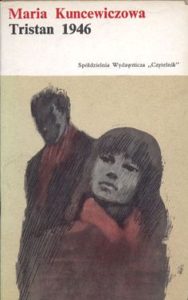
Maria Kuncewiczowa, Tristan 1946
Warsaw: Czytelnik, 1967; many reprints
Tristan 1946 is a compelling tale set in post-war Cornwall, London and New York, but with a strong undercurrent of traumatic memory that constantly draws the central character, a young veteran of the Warsaw Uprising and German camps, back to his experiences in his native Poland, however hard he tries to forget them. His love affair with a red-haired Irish beauty, begun on the rugged coastline of Cornwall, follows a similar development to the Tristan and Isolde myth, with several other characters likewise playing parallel roles. At the same time, however, it unfolds as an ironic critique of this very model of exclusive erotic passion, giving it many modern twists and unpredictable deviations, sometimes humorous as well as tragic.
Kuncewiczowa (1895-1989) was one of the three foremost Polish women writers of the interwar and post-WW2 years, alongside Nałkowska and Dąbrowska. She was a pioneer of psychological prose and a shrewd analyst of motherhood, far distanced from the traditional Polish stereotype, another strong theme in Tristan 1946 where the chief narrator is the hero’s mother.
Why translate it?
Although the modern Tristan is a Polish émigré, whose experience of Britain reflects much of Kuncewiczowa’s autobiographical experience, the Tristan theme makes it a universal story open to anyone who feels its romantic power and yet fears its innate deceptions. The novel is a tour-de-force of psychological deconstructionism anticipating Denis de Rougemont’s analysis of romantic love in his famous Love in the Western World (1975).
–Ursula Phillips 
Pola Gojawiczyńska, Dziewczęta z Nowolipek (The Girls from Nowolipki Street)
Warsaw: Rój, 1935; many reprints
Set in the close-knit community of a poor district of central Warsaw just before the outbreak of World War I and Poland’s rebirth as an independent nation, this novel records the lives of a group of ordinary girls maturing from childhood into womanhood, their daily struggles, aspirations and disappointments, as they seek happiness and improvement in their lot, driven by a sense of natural justice and solidarity with each other. Their “small homeland”—more relevant to them than the greater—is the network of noisy narrow streets delineating the boundaries of their working-class world, until some of them at least break away, if only in part or only to confront personal tragedy.
Gojawiczyńska (1896-1963) wrote socially orientated prose highlighting the economic plight of the underclasses and especially working-class girls, daughters of simple artisans or single mothers, kept women and prostitutes.
Why translate it?
Despite the poverty and hardships experienced by the heroines, this is not a gloomy read. The warm empathetic tone of the narrative and likeability of the individual characters draw the reader into a deep concern for their fate which extends beyond the immediate social setting. The mixed community that includes Jews and Russians as well as Poles is vividly captured—these were the very streets that would find themselves a quarter century later within or just outside the ghetto walls.
–Ursula Phillips
Anna Błasiak
Anna Błasiak has translated over 30 books from English into Polish and fiction from Polish into English. She has worked in museums and a radio station, run magazines, and written on art, film, and literature.









